-
Posts
569 -
Joined
-
Last visited
-
Days Won
1
Content Type
Profiles
Forums
Events
Posts posted by Kartazion
-
-
8 minutes ago, joigus said:
What does this have to do with a metric in curved space-time?
The ratio between the "impulssion energy" and the velocity of the particle gives the curvature by "?".
9 minutes ago, joigus said:And how could energy-momentum be "depleted" when the particle picks up speed?
Dark energy can maintain constant or accelerated kinetics. But in the fugure case presented the particle has reached the end of the expansion of the universe and falls back into a big-crunch.
0 -
Here in Figure 3 is an archaic representation, really very basic and non-operational yet, but which already gives an idea of how one could interpret the flow/flux of mass-energy equivalence related to the impulssion/momentum energy ; And integrated into the gravitational attraction. A clear distinction must be made between the mass-energy equivalence and the momentum energy given to the particle.
The depletion of momentum energy occurs as the particle picks up speed. IOW the exhaustion of the energy of the impulssion is related (proportinnal?) to the speed of the particle. I have to complete the missing parameters. I'm working on it. Your help has been invaluable to me.
I'm not sure I have correctly identified the problem in relation to the tool called energy–momentum tensor or else it represents a different vision.
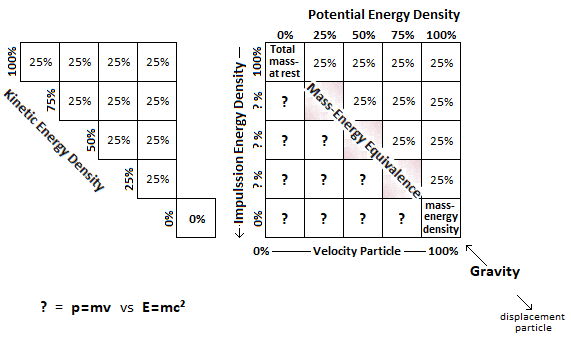
Figure 3.0 -
1 hour ago, joigus said:
What is a "pofinage"?
Tweaking. Sorry. 'pofinage' was a French word.
1 hour ago, joigus said:And how can a basis remain orthogonal irrespective of the metric? The metric is what tells you whether
a basisany given set of vectors is orthogonal or not.I wrote orthonormal and not orthogonal.
1 hour ago, joigus said:Infinite value of what? Singularities in the metric are meaningless. It's only singularities in the Riemann tensor that are physically significant.
A gravitational singularity is a region of spacetime in the vicinity of which certain quantities describing the gravitational field become infinite regardless of the coordinate system used.
1 hour ago, joigus said:Singularities in the metric are meaningless. It's only singularities in the Riemann tensor that are physically significant.
The Kerr metric is also a vacuum solution and describes a black hole and the shape of a ring can be called a ring singularity or ringularity.
1 hour ago, joigus said:Also, a 3pi angle points in the negative x direction, not in the negative y direction. I think you meant 3pi/2. Whatever x and y mean. There we go again.
I corrected. Thanks.
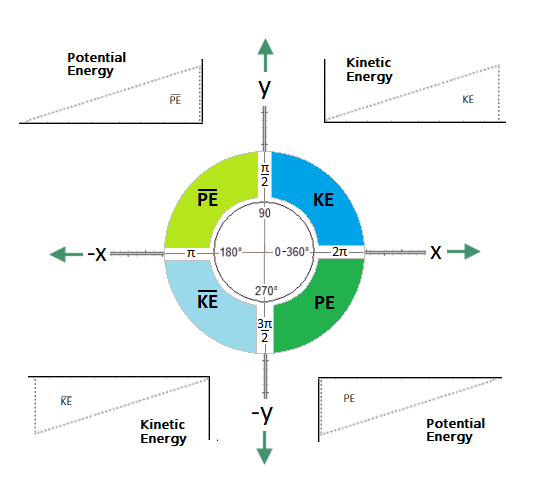 1 hour ago, Markus Hanke said:
1 hour ago, Markus Hanke said:- you begin with an energy-momentum tensor plus boundary conditions, then you use these to solve the Einstein equations. That gives you the metric.
I don't want to be clumsy in my answer. But already the mass of the particle at rest located at the level of the singularity represents the total mass of the universe. I therefore let you imagine the amount of energy to be applied to the particle in order to be able to simulate inflation through an oscillating movement.
0 -
26 minutes ago, Markus Hanke said:
Ok, so what is the metric? You haven’t written it down yet.
I don't know yet demonstrated a metric tensor. But the metric (maybe the term is badly chosen) in the proper sense of the term does not change the orthonormal basis. On the other hand, the interpretation of the curvature of space-time of the black hole is affected by the innovation that I support. To do this, and at first, a simple matrix can be used. But I haven't finished writing about it yet. I already have all the technical elements but the pofinage remains to be determined. This remains a complex subject in its interpretation of what is a space-time curvature from the inflation. In a second time the tensor will be able to generate the shape of our universe in its continuum, while the matrix will be the mechanism which constitutes it through the particle.
0 -
4 minutes ago, Bufofrog said:
So this metric is involves the very early universe?
Yes of course. It corresponds to the particle at rest of an immeasurable value of its mass, and as well as the interpretation of the true vacuum in quantum field theory.
Thereafter the extension of the particle is interpreted by the principle of mass-energy equivalence.
The purpose of this experiment is to be able to precisely add the explanation of inflation up to the Friedmann-Robertson-Walker metric which is already very good one.
The problem with Kerr–Newman metric is the consideration of symmetric entailment.
But Newman found a way out with Axial symmetry.
In this reference I base myself on an energy density of the particle as a convergent point thanks to the principle of mass-energy equivalence, until its rest:
QuoteThe Kerr–Newman solution is a special case of more general exact solutions of the Einstein–Maxwell equations with non-zero cosmological constant. Einstein's cosmological constant, is the constant coefficient of a term Albert Einstein temporarily added to his field equations of general relativity. He later removed it. Much later it was revived and reinterpreted as the energy density of space, or vacuum energy, that arises in quantum mechanics. It is closely associated with the concept of dark energy. Wikipedia
IOW Kerr-Newman metric describes a black hole solutions to the Einstein-Maxwell equations of general relativity.
Very simply and for a black hole considering a potential energy and a kinetic energy of the particle by Hawking radiation determines the following clock Figure 2.
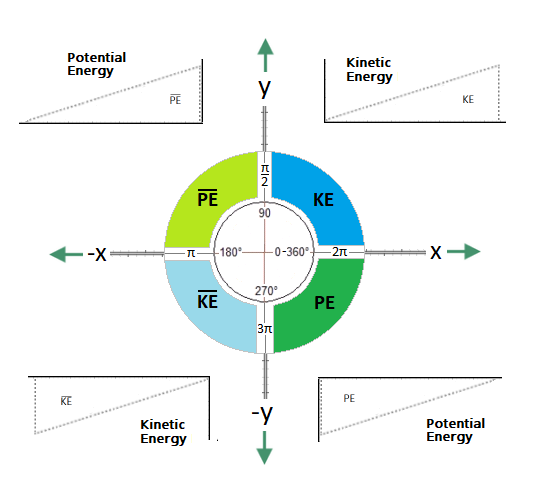
Figure 2.0 -
Hello.
14 hours ago, Markus Hanke said:I believe you are thinking of specific, symmetric solutions such as the Kerr spacetime. In those special cases the situation is indeed unambiguous - but that’s because these cases assume certain symmetries that remove the extra degrees of freedom.
I indeed have a preference for the interpretation for Kerr–Newman metric which seems to me the one that comes closest to the gravitational singularity, because this metric includes the non-zero mass with a non-zero electric charge and an equally non-zero angular momentum. But I believe that its metric is limited to that of the black hole and does not assume the rest of the space-time to be studied. I will therefore open a new thread to explain if you will the metric which I think could elucidate the interpretation of the gravitational singularity of the big-bang type followed by its metric of expansion of the rest of the space-time of the universe . I don't know if I'm overdoing it but its name is Kartazion Metrics.
0 -
Hello.
Here is a topic which is not one of the simplest. Here is the proposal for a new metric which has the principle of being able to take into account cosmic inflation in relation to the expansion of the universe. Indeed its mechanism is that of the interpretation and for a gravitational singularity of a single-particle entropic convergence. IOW what is defined as a singularity with infinite value would then only be an interpretation of a paricle at rest. The expansion of the particle from its singular point which expresses its rest will therefore propagate asymmetrically in space-time. At first, the entropy of a supermassive black hole is only the particle's alternation between singularity (singular point) and the galactic halo. When the correlated particle explained by chromodynamics, is expressed in mass, while its flow between singularity and correlated matter is expressed in energy by the prince of mass-energy equvalence (Figure 1). The next post will be fed with a more explicit explanation.
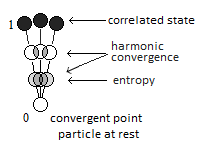
Figure 1
Reference:
[1] Kerr–Newman metric
[2] Friedmann-Robertson-Walker0 -
As you know I like to speak in pictures. Judging by my very first thread [1] on this form, here Figure 1 is how precisely the quasilocal mass is already an excellent visual approach to what I was saying previously. The second interpretation to be made and for the other part not understandable is simply appliclabe to the principle of the mass-energy equivalence.
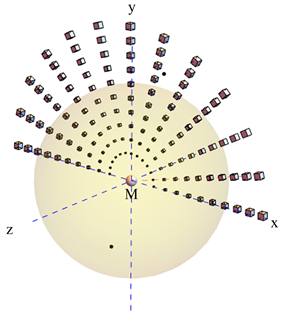
Figure 1. source: https://www.scirp.org/journal/paperinformation.aspx?paperid=116396 credit: https://orcid.org/0000-0001-7277-1654[1]
49 minutes ago, MigL said:Do you have an aversion to reading ?
Yes yes. I understand where the community struggles to understand.
0 -
1 hour ago, MigL said:
Due to gravity's non-linearity, mass cannot simply be weighed , as the gravitational 'field' is also a source of gravity, and the two are difficult to separate. Gravity gravitates, and the 'field' adds to the energy-momentum ( mass ).
The fact that the gravitational waves are spiral indicates in one, that its propagation is asymmetric (outside the binary system), and in two that there is the possibility of being able to interpret the spiral propagation by an interpretation of a linear propagation mechanism (like a kind screw where its position on it is linear). But the more important is the interpretation of gravity as we know it, at the level of the observer, and in its "usual" interaction, acts as a vectorial action, and this attraction due to gravity is therefore perpendicular to the observer and this in relation to the ground i.e. here on Earth. IOW the radius whose source of gravity which is the emitter of it, crosses the gravitational wave by cutting it. I have a clear mechanical interpretation on this subject, but due to the rules of this forum I should open a new thread on it.
0 -
Ok. So what does this article brings to the understanding of the energies of the universe?
0 -
5 hours ago, Markus Hanke said:
... - it’s actually more about angular momentum (which is just as ambiguous as mass), but the problems are closely related:
No it's not ambiguous. For example associate the linear displacement of the particle following the rotation of a clock which makes it possible to determine the position of the particle. In this example the direction stay the same and does not depend on the angle. IOW I find it logical and for angular rotation associated with the linear displacement of the particle, namely the speed of the particle according to the angular velocity to be able to determine its mass by mass-energy equivalence. A weak rotation of the angular velocity makes it possible to make move the particle radiatively or linearly in a form of classical interpretation of the mass, whereas a fast rotation determines a flow of it due to the principle of equivalence.
Hence the angular momentum related to that of the mass of a black hole is fully justified.
0 -
18 hours ago, Markus Hanke said:
I believe the problem has recently been solved, though I haven’t had time to look into this new development, so I can’t comment yet.
I'm curious to know what the news is on this. If there is a source it is welcome.
0 -
58 minutes ago, Markus Hanke said:
I’m not sure what you mean here - could you elaborate?
It's something about Klein–Gordon equation. I thought it was used.
Energy and flux is a scalar quantity. That's why I thought that.
1 -
2 hours ago, Markus Hanke said:
I reiterate again that E=mc^2 works only for massive particles at rest - it’s a special case of the energy-momentum relation, which is in turn just the magnitude of the energy-momentum 4-vector.
But the interpretation of the energy E is scalar through the stress-energy-momentum tensor.
It's just for confirmation.
Thanks.0 -
@Bufofrog I have answered your question 2 or 3 times. I told you that for the Y-axis it was the potential and this potential is that of energy.
During inflation there are quantum fluctuations in the inflaton field. Since the total energy density of the universe is dominated by the inflaton potential energy density, fluctuations in the inflaton field lead to fluctuations in the energy density.
Source: https://ned.ipac.caltech.edu/level5/Kolb/Kolb3_1.html
For the X-axis. No it is not the radius. In general relativity and cosmology, the Hubble radius corresponds to the length scale characteristic of the observable portion of an expanding universe. In other words, the size of the observable universe is of the same order of magnitude as the Hubble radius. In fact the X-axis corresponds to the displacement of the particle. But you must understand that during inflation the particle remains immovable in relation to X and evolves only according to Y-axis by its momentum. Quantum fluctuations in relation to the inflaton and if we could, are not observable by its particle size but just by a set of a cluster.Am I wrong? Because I could also be wrong, or it's just you that don't understand how the inflation is interpreted in its potential well?
0 -
6 minutes ago, Bufofrog said:
That is not very helpful.
On your graph does the inflation end where the arrow ends or is inflation represented by the entire Y-axis? So on the Y-axis where you have E, you really mean energy density?
It would really help me to understand the graphs if you answered my questions.
This is expressed in relation to the potential often denoted v.
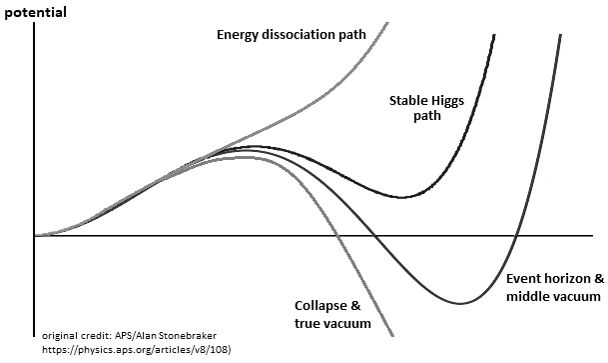
https://ned.ipac.caltech.edu/level5/Liddle/Liddle5_1.html
One can think of the first term in each as a kinetic energy, and the second as a potential energy. The potential energy V(
 ) can be thought of as a form of `configurational' or `binding' energy; it measures how much internal energy is associated with a particular field value. Normally, like all systems, scalar fields try to minimize this energy; however, a crucial ingredient which allows inflation is that scalar fields are not always very efficient at reaching this minimum energy state.
) can be thought of as a form of `configurational' or `binding' energy; it measures how much internal energy is associated with a particular field value. Normally, like all systems, scalar fields try to minimize this energy; however, a crucial ingredient which allows inflation is that scalar fields are not always very efficient at reaching this minimum energy state.
Note in passing that a scalar field cannot in general be described by an equation of state; there is no unique value of p that can be associated with a given
 as the energy density can be divided between potential and kinetic energy in different ways.
as the energy density can be divided between potential and kinetic energy in different ways.
In a given theory, there would be a specific form for the potential V(
 ), at least up to some parameters which one could hope to measure (such as the effective mass and interaction strength of the scalar field). However, we are not presently in a position where there is a well established fundamental theory that one can use, so, in the absence of such a theory, inflation workers tend to regard V(
), at least up to some parameters which one could hope to measure (such as the effective mass and interaction strength of the scalar field). However, we are not presently in a position where there is a well established fundamental theory that one can use, so, in the absence of such a theory, inflation workers tend to regard V( ) as a function to be chosen arbitrarily, with different choices corresponding to different models of inflation (of which there are many). Some example potentials are
) as a function to be chosen arbitrarily, with different choices corresponding to different models of inflation (of which there are many). Some example potentials are

(35) 
(36) 
(37) The strength of this approach is that it seems possible to capture many of the crucial properties of inflation by looking at some simple potentials; one is looking for results which will still hold when more `realistic' potentials are chosen. Figure 3 shows such a generic potential, with the scalar field displaced from the minimum and trying to reach it.
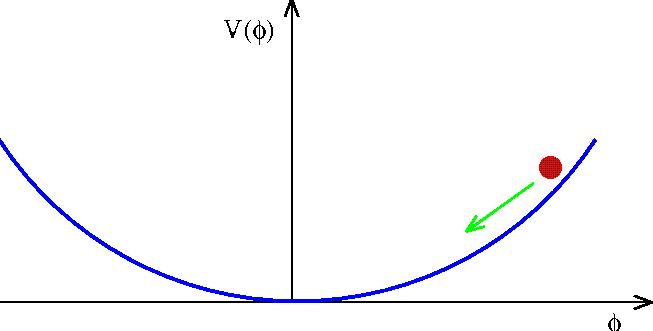 0
0 -
29 minutes ago, joigus said:
Are you implying that charge is not conserved?
The symmetry breaking is located at x=0 at the level of the gravitational singularity. The charge and the parity CP are inverted between matter and antimatter.
The oscillation of the particle between matter and antimatter gives the characteristic of an asymmetric distribution.
0 -
1 hour ago, Bufofrog said:
I guess you need specific questions.
Yes exactly.
1 hour ago, Bufofrog said:On the legend for the Y-axis you have the words inflation and energy. Both inflation and energy have up arrows so I assume that the 2 quantities are increasing.
Does the Y-axis have 2 continuous values, both inflation and energy? Or does the bottom half of the graph use inflation as a Y-axis and the top of the graph use Energy for the Y axis? What are the units of inflation? What does it mean for inflation to increase? What Energy are you talking about?
This is inflation through the gravitational singularity energy potential. Of course the energy is that of potential through its density.
https://universe-review.ca/R02-13-inflation.htm

https://ppt-online.org/180450 0
0 -
1 hour ago, Bufofrog said:
So you still have not explained what the graphs in the OP are suppose to mean.
It represents the evolution of the universe through the anharmonic oscillator.
1 hour ago, Bufofrog said:The graphs are not in any normal format that I have ever seen, so an explanation would be very helpful.
https://medium.com/predict/the-oscillating-universe-d259ab408433
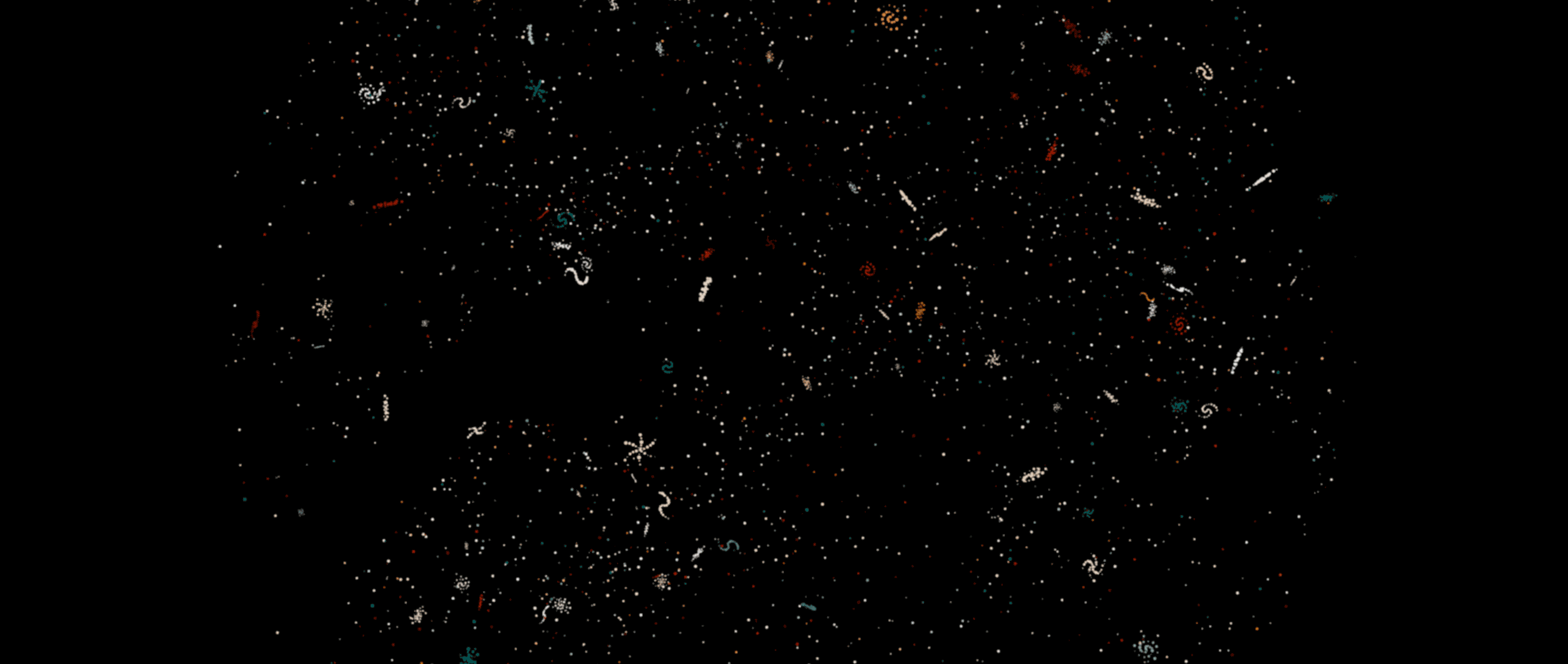 55 minutes ago, Phi for All said:
55 minutes ago, Phi for All said:If it continues in this thread, I'll report it ..
To who?
You are in the denial of reality.
55 minutes ago, Phi for All said:... and maybe we can either get some clarification ...
https://arxiv.org/abs/astro-ph/9904313
In a recent paper Damour and Mukhanov describe a scenario where inflation may continue during the oscillatory phase. This effect is possible because the scalar field spends a significant fraction of each period of oscillation on the upper part of the potential. Such additional period of inflation could push perturbations after the slow roll regime to observable scales.
 0
0 -
9 minutes ago, Bufofrog said:
You posted it on another site and I saw it.
Okay. Well done. But coming from me you've never seen it before. By ambiguity this brought confusion for the reader of a fact that this graph already existed. But it's not.
10 minutes ago, Bufofrog said:That doesn't have anything to do with the graphs that supposedly show the 'evolution of the universe'.
On the contrary, dear friend. We must already begin with the beginning. But ok it is the gravitational singularity of the Big-Bang which allows to develop the energy of current potential energy of the universe. So?
0 -
2 hours ago, Bufofrog said:
I have seen it before.
Everyone knows you're unable to provide a source for what you're saying. You put yourself in a very awkward position. Now I'm waiting to see what you're going to answer me.
2 hours ago, Bufofrog said:You've never been able to give a reasonable explanation of what you think these graphs represent.
I can easily explain each of these points.
I start with the simplest with the example relates to the "Hole Through the Earth Simple Harmonic Motion".The functioning of our universe and atomic is based on the oscillation of the particle itself and asymmetrically between matter and antimatter. This mechanism is a classical an-harmonic oscillator and uses a linear oscillation of the particle, where the energy can be represented by the graph of a potential well followed by the principle and law of conservation of energy between the kinetic energy and potential energy. This an-harmonic oscillation therefore occurs with a gravitational oscillator (see "Hole Through the Earth Simple Harmonic Motion"). This linear gravitational oscillator in the following figure uses a particle of mass m oscillating vertically along the gravity vector G. The oscillation has two phases. The first is the falling phase of the particle with its Potential Energy PE and the second is the reverse phase which corresponds to the Kinetic Energy KE. It is from the center of the Earth that what is in Potential Energy is transformed into Kinetic Energy and is reversed at the level at the point of origine 0 or x=0.

Potential Energy - Kinetic Energy = 0
References:
1. John. D. Barrow; Mariusz. P. Dabrowski; Oscillating universes. Monthly Notices of the Royal Astro nomical Society 1995, 275, 850-862, 10.1093/mnras/275.3.850. [82] [83] [84]
2. Yun-Song Piao; Yuan-Zhong Zhang; Inflation in oscillating universe. Nuclear Physics B 2005, 725 , 265-274, 10.1016/j.nuclphysb.2005.07.021.
3. Itzhak Goldman; Nathan Rosen; Gravitation Theory and Oscillating Universe. Physical Review D 1972, 5, 1285-1287, 10.1103/physrevd.5.1285.
4. Roy A. Briere; LHCb Collaboration; Observing Matter-Antimatter Oscillations. Physics 2013, 6, 1- 3, 10.1103/physics.6.26.
5. M.K. Parida; Natural mass scales for observable matter-antimatter oscillations in SO(10). Physics Letters B 1983, 126, 220-224, 10.1016/0370-2693(83)90594-4
9. Andrew J. Simoson; Falling down a Hole through the Earth. Mathematics Magazine 2004, 77, 17 1, 10.2307/3219113.
10. Journey through the center of the Earth . Hyperphysics. Retrieved 2022-7-280 -
Hello,
Here are in pictures of the evolution of the universe as you've probably never seen it.
References:
Spoiler1. John. D. Barrow; Mariusz. P. Dabrowski; Oscillating universes. Monthly Notices of the Royal Astro nomical Society 1995, 275, 850-862, 10.1093/mnras/275.3.850. [82] [83] [84]
2. Yun-Song Piao; Yuan-Zhong Zhang; Inflation in oscillating universe. Nuclear Physics B 2005, 725 , 265-274, 10.1016/j.nuclphysb.2005.07.021.
3. Itzhak Goldman; Nathan Rosen; Gravitation Theory and Oscillating Universe. Physical Review D 1972, 5, 1285-1287, 10.1103/physrevd.5.1285.
4. Roy A. Briere; LHCb Collaboration; Observing Matter-Antimatter Oscillations. Physics 2013, 6, 1- 3, 10.1103/physics.6.26.
5. M.K. Parida; Natural mass scales for observable matter-antimatter oscillations in SO(10). Physics Letters B 1983, 126, 220-224, 10.1016/0370-2693(83)90594-4.
6. Iberê Kuntz; Roberto Casadio; Singularity avoidance in quantum gravity. Physics Letters B 2020, 802, 135219, 10.1016/j.physletb.2020.135219.
7. V Husain; Singularity avoidance, lattices, and quantum gravity. Canadian Journal of Physics 200 8, 86, 583-586, 10.1139/p07-201.
8. J Brunnemann; T Thiemann; On (cosmological) singularity avoidance in loop quantum gravity. Cl assical and Quantum Gravity 2006, 23, 1395-1427, 10.1088/0264-9381/23/5/001.
9. Andrew J. Simoson; Falling down a Hole through the Earth. Mathematics Magazine 2004, 77, 17 1, 10.2307/3219113.
10. Journey through the center of the Earth . Hyperphysics. Retrieved 2022-7-28
11. C. A. Coulson; R. P. Bell; Kinetic energy, potential energy and force in molecule formation. Trans. Faraday Soc. 1945, 41, 141-149, 10.1039/tf9454100141.
12. Robert C. Hilborn; Galilean Transformations of Kinetic Energy, Work, and Potential Energy. The P hysics Teacher 2019, 57, 40-43, 10.1119/1.5084927.
13. William D. Harkins; The Change of Molecular Kinetic Energy into Molecular Potential Energy. Pro ceedings of the National Academy of Sciences 1919, 5, 539-546, 10.1073/pnas.5.12.539.
14. R. H. Schwendeman; Comparison of Experimentally Derived and Theoretically Calculated Deriva tives of the Energy, Kinetic Energy, and Potential Energy for CO. The Journal of Chemical Physics 1966, 44, 2115-2119, 10.1063/1.1726989.
15. R. F. Snider; Conversion between kinetic energy and potential energy in the classical nonlocal Bo ltzmann equation. Journal of Statistical Physics 1995, 80, 1085-1117, 10.1007/bf02179865.
16. Rory O. Rafi Y. Thompson; Efficiency of conversion of kinetic energy to potential energy by a bre aking internal gravity wave. Journal of Geophysical Research 1980, 85, 6631, 10.1029/jc085ic11p06631.
17. Timothy H Boyer; Quantum zero-point energy and long-range forces. Annals of Physics 1970, 5 6, 474-503, 10.1016/0003-4916(70)90027-8.
18. Hristu Culetu; The zero point energy and gravitation. arXiv 2004, 1, 1-18, 10.48550/arXiv.hep-t h/0410133.
19. Jevgenijs Kaupuzs; Energy fluctuations and the singularity of specific heat in a 3D Ising model. S econd International Symposium on Fluctuations and Noise 2004, 1, 480-491, 10.1117/12.54649 3.
20. John D. Barrow; Robert J. Scherrer; Constraining density fluctuations with big bang nucleosynthe sis in the era of precision cosmology. Physical Review D 2018, 98, 043534, 10.1103/physrevd.98.043534.
21. M. Giovannini; M. E. Shaposhnikov; Primordial Magnetic Fields, Anomalous Matter-Antimatter Flu ctuations, and Big Bang Nucleosynthesis. Physical Review Letters 1998, 80, 22-25, 10.1103/phy srevlett.80.22.
22. Kouji Nakamura; Shigelu Konno; Yoshimi Oshiro; Akira Tomimatsu; Quantum Fluctuations of Blac k Hole Geometry. Progress of Theoretical Physics 1993, 90, 861-870, 10.1143/ptp.90.861.
23. Jianwei Mei; Fluctuating black hole horizons. Journal of High Energy Physics 2013, 2013, 195, 1 0.1007/jhep10(2013)195.
24. Tomohiro Takahashi; Jiro Soda; Hawking radiation from fluctuating black holes. Classical and Qu antum Gravity 2010, 27, 1-35, 10.1088/0264-9381/27/17/175008.
25. The hydrogen atom with an origin centred singularity . ResearchGate. Retrieved 2022-7-28
26. How is Matter Ejected from an Event Horizon Around a Black Hole? . The National Radio Astrono my Observatory. Retrieved 2022-7-28
27. Don N Page; Hawking radiation and black hole thermodynamics. New Journal of Physics 2005, 7 , 203-203, 10.1088/1367-2630/7/1/203.
28. Gilad Gour; A J M Medved; Thermal fluctuations and black-hole entropy. Classical and Quantum Gravity 2003, 20, 3307-3326, 10.1088/0264-9381/20/15/303.
29. A Marasco; G Cresci; L Posti; F Fraternali; F Mannucci; A Marconi; F Belfiore; S M Fall; A universal relation between the properties of supermassive black holes, galaxies, and dark matter haloes. Monthly Notices of the Royal Astronomical Society 2021, 507, 4274-4293, 10.1093/mnras/stab2 317.
30. Andrew King; The Supermassive Black Hole—Galaxy Connection. null 2013, 49, 427-451, 10.10 07/978-1-4939-2227-7_21.
31. Luca Fabbri; Black Hole singularity avoidance by the Higgs scalar field. The European Physical Jo urnal C 2018, 78, 1028, 10.1140/epjc/s10052-018-6505-6.
32. Marcelo Gleiser; Metastability in the early Universe. Physical Review D 1990, 42, 3350-3361, 10 .1103/physrevd.42.3350.
33. Katherine J. Mack; Robert McNees; Bounds on extra dimensions from micro black holes in the co ntext of the metastable Higgs vacuum. Physical Review D 2019, 99, 063001, 10.1103/physrevd. 99.063001.
34. Itzhak Bars; Paul J. Steinhardt; Neil Turok; Cyclic cosmology, conformal symmetry and the metas tability of the Higgs. Physics Letters B 2013, 726, 50-55, 10.1016/j.physletb.2013.08.071.
35. Nikolaos Tetradis; Black holes and Higgs stability. Journal of Cosmology and Astroparticle Physics 2016, 2016, 036-036, 10.1088/1475-7516/2016/09/036.
36. Bernhard Haisch; Alfonson Rueda; H.E. Puthoff; Physics of the zero-point field: implications for in ertia, gravitation and mass. Speculations in Science and Technology 1997, 20, 99-114, 10.1023/ a:1018516704228.
37. Bo Song; Shovan Dutta; Shaurya Bhave; Jr-Chiun Yu; Edward Carter; Nigel Cooper; Ulrich Schnei der; Realizing discontinuous quantum phase transitions in a strongly correlated driven optical la ttice. Nature Physics 2022, 18, 259-264, 10.1038/s41567-021-01476-w.
38. Are We on the Brink of the Higgs Abyss? . Physcis. Retrieved 2022-7-31
39. E.M Henley; High energy diffractive dissociation of pions and the A1. Annals of Physics 1971, 63 , 541-548, 10.1016/0003-4916(71)90027-3.
40. Krishnanand Sinha; On the oscillator strength and the dissociation energy of CN molecules. Rese archGate 1986, 1, 1-6, .
41. J. Hussels; N. Hölsch; C.-F. Cheng; E. J. Salumbides; H. L. Bethlem; K. S. E. Eikema; Ch. Jungen; M . Beyer; F. Merkt; W. Ubachs; et al. Improved ionization and dissociation energies of the deuteriu m molecule. Physical Review A 2022, 105, 022820, 10.1103/physreva.105.022820.
42. C. H. L. Goodman; Ionic-Covalent Bonding in Crystals. Nature 1960, 187, 590-591, 10.1038/187 590a0.
43. John Bannister Goodenough; First-order changes in ionic/covalent bonding. Ferroelectrics 1992, 130, 77-86, 10.1080/00150199208019535.
44. E.V. Kolontsova; Å.â. Êîëîíöîâà; Radiation-induced states in crystals with ionic-covalent bonds. Us pekhi Fizicheskih Nauk 1987, 151, 149-172, 10.3367/ufnr.0151.198701g.0149.
45. Weizhang Huang; Weishi Liu; Yufei Yu; Permanent charge effects on ionic flow: a numerical study of flux ratios and their bifurcation. arXiv 2020, 1, 1-31, 10.48550/arXiv.2003.11223.
46. Giulia L. Celora; Matthew G. Hennessy; Andreas Münch; Barbara Wagner; Sarah L. Waters; The d ynamics of a collapsing polyelectrolyte gel. null 2021, 1, 1-34, 10.48550/arXiv.2105.06495.
47. M. B. Fröb; C. Rein; R. Verch; Graviton corrections to the Newtonian potential using invariant obs ervables. Journal of High Energy Physics 2022, 2022, 1-29, 10.1007/jhep01(2022)180.
48. Lintao Tan; Nikolaos Christos Tsamis; Richard Paul Woodard; How Inflationary Gravitons Affect th e Force of Gravity. Universe 2022, 8, 376, 10.3390/universe8070376.
49. Mark Kowitt; Gravitational repulsion and Dirac antimatter. International Journal of Theoretical Ph ysics 1996, 35, 605-631, 10.1007/bf02082828.
50. Tong Bor Tang; Li Zhi Fang; The cosmic asymmetry in matter-antimatter. Vistas in Astronomy 19 84, 27, 1-23, 10.1016/0083-6656(84)90010-2.
51. Anonymous; Universe Preceded by an Antiuniverse?. Physics 2018, 11, 1, 10.1103/physics.11.s147.
52. S.J. Robles-Pérez; Quantum Creation of a Universe–Antiuniverse Pair. Acta Physica Polonica B Pro ceedings Supplement 2020, 13, 1-7, 10.5506/aphyspolbsupp.13.325.
53. R. L. Jaffe; Casimir effect and the quantum vacuum. Physical Review D 2005, 72, 021301, 10.11 03/physrevd.72.021301.
54. Gilles Cohen-Tannoudji; The de Broglie universal substratum, the Lochak monopoles and the dar k universe. arXiv 2015, 1, 1-20, 10.48550/arXiv.1507.00460.
55. Four reasons why the quantum vacuum may explain dark matter . PhysOrg.com. Retrieved 2022 -7-28 56. Antonio Capolupo; Quantum Vacuum, Dark Matter, Dark Energy, and Spontaneous Supersymme try Breaking. Advances in High Energy Physics 2018, 2018, 1-7, 10.1155/2018/9840351.
57. Dragan Slavkov Hajdukovic; Quantum vacuum and dark matter. Astrophysics and Space Science 2011, 337, 9-14, 10.1007/s10509-011-0938-9.
58. Davide Castelvecchi; New type of dark energy could solve Universe expansion mystery. Nature 2021, 1, 1, 10.1038/d41586-021-02531-5.
59. Eric V. Linder; Dark Energy, Expansion History of the Universe, and SNAP. PROCEEDINGS OF THE INTERNATIONAL CONFERENCE “PHYSICAL MESOMECHANICS. MATERIALS WITH MULTILEVEL HIER ARCHICAL STRUCTURE AND INTELLIGENT MANUFACTURING TECHNOLOGY” 2003, 655, 193-207, 10.1063/1.1543500.
60. Jacob Schaf; dark energy expansion. Universal Journal of Physics and Application 2015, 9, 182-1 87, 10.13189/ujpa.2015.090403.
61. Dragan Huterer; David Kirkby; Rachel Bean; Andrew Connolly; Kyle Dawson; Scott Dodelson; Au gust Evrard; Bhuvnesh Jain; Michael Jarvis; Eric Linder; et al. Growth of cosmic structure: Probin g dark energy beyond expansion. Astroparticle Physics 2014, 63, 23-41, 10.1016/j.astropartphy s.2014.07.004.
62. Gang Xin; Peng Wang; Exploring superposition state in multi-scale quantum harmonic oscillator algorithm. Applied Soft Computing 2021, 107, 107398, 10.1016/j.asoc.2021.107398.
63. Eva Zakka-Bajjani; François Nguyen; Minhyea Lee; Leila R. Vale; Raymond W. Simmonds; Jose Au mentado; Quantum superposition of a single microwave photon in two different ’colour’ states. Nature Physics 2011, 7, 599-603, 10.1038/nphys2035.
64. Martin J. Renner; Časlav Brukner; Computational Advantage from a Quantum Superposition of Q ubit Gate Orders. Physical Review Letters 2022, 128, 230503, 10.1103/physrevlett.128.230503.
65. P. A. Cook; Meson coupling constants in a quark model. Il Nuovo Cimento A Series 10 1967, 48, 570-572, 10.1007/bf02818032.
66. Fujio Takagi; Meson-Baryon Coupling Constants in the Quark Model. Progress of Theoretical Phys ics 1967, 37, 1047-1048, 10.1143/ptp.37.1047.
67. E. M. Henley; T. Oka; J. D. Vergados; Meson-nucleon coupling constants in a quark model. Few-B ody Systems 1990, 9, 75-87, 10.1007/bf01091699.
68. R. Brout; From asymptotic freedom to quark confinement. Nuclear Physics B 1988, 310, 127-14 0, 10.1016/0550-3213(88)90057-0.
69. Kei-Ichi Kondo; Abelian-Projected Effective Gauge Theory of QCD with Asymptotic Freedom and Quark Confinement. Progress of Theoretical Physics Supplement 1998, 131, 243-255, 10.1143/ptps.131.243.
70. Kanako Yamazaki; T. Matsui; Gordon Baym; Entropy in the quark–hadron transition. Nuclear Phys ics A 2015, 933, 245-255, 10.1016/j.nuclphysa.2014.10.046.
71. David Dudal; Subhash Mahapatra; Thermal entropy of a quark-antiquark pair above and below d econfinement from a dynamical holographic QCD model. Physical Review D 2017, 96, 126010, 10.1103/physrevd.96.126010.
72. Tri Quoc Truong; Tadashi Tsubone; Munehisa Sekikawa; Naohiko Inaba; Border-collision bifurcatio ns and Arnol’d tongues in two coupled piecewise-constant oscillators. Physica Nonlinear Phen omena 2019, 401, 132148, 10.1016/j.physd.2019.132148.
73. D Gabor; Plasma oscillations. British Journal of Applied Physics 1951, 2, 209-218, 10.1088/0508- 3443/2/8/301.
74. Toshio Nakayama; Irreversibility in Plasmas: Entropy Production. Progress of Theoretical Physics 1974, 51, 77-81, 10.1143/ptp.51.77.
75. Ettore Minardi; Minardi, E. Thermodynamics of High Temperature Plasmas. Entropy, 2009, 11, 1 24-221. Entropy 2009, 11, 457-462, 10.3390/e11030457.
76. R. Shankar; Determination of the quark-gluon coupling constant. Physical Review D 1977, 15, 7 55-758, 10.1103/physrevd.15.755.
77. M. A. Braun; Reggeized gluons with a running coupling constant. Physics Letters B 1995, 348, 1 90-195, 10.1016/0370-2693(95)00101-p.
78. M. Althoff; W. Braunschweig; F.J. Kirschfink; K. Lübelsmeyer; H.-U. Martyn; J. Rimkus; P. Rosskam p; H.G. Sander; D. Schmitz; H. Siebke; et al. Experimental test of the flavor independence of the quark-gluon coupling constant. Physics Letters B 1984, 138, 317-324, 10.1016/0370-2693(84)9 1668-x.
79. Lawrence Slifkin; Entropy and the Frequency of a Harmonic Oscillator. American Journal of Physi cs 1965, 33, 408-408, 10.1119/1.1971569.
80. N. Fornengo; C. Giunti; C.W. Kim; J. Song; Gravitational effects on the neutrino oscillation in vacu um. Nuclear Physics B - Proceedings Supplements 1999, 70, 264-266, 10.1016/s0920-5632(98) 00435-6.
81. Quantum Field and 2nd Quantization (2021 Edition) . universe-review.ca. Retrieved 2022-7-29
82. Anharmonic Oscillator . GitHub. Retrieved 2022-8-2
83. Damiano Anselmi; Purely Virtual Particles in Quantum Gravity, Inflationary Cosmology and Collid er Physics. Symmetry 2022, 14, 521, 10.3390/sym14030521.
84. Janne Mikael Karimäki; Virtual Particle Interpretation of Quantum Mechanics - a non-dualistic mo del of QM with a natural probability interpretation. arXiv 2012, 1, 1-8, 10.48550/arXiv.1206.123 7.0 -
4 hours ago, MigL said:
Nobody else understands either.
How can you know before I publish it?
3 hours ago, joigus said:That's why your depiction of a sombrero potential superimposed to a gravitational singularity doesn't make any sense:
... Unless I've misunderstood you really badly, ...Precisely. It is all the interest of the gravitational potential energy of the mass to be above a gravitational attraction.
Einstein gravitation appears to be affected by the Penrose-Hawking theorem, stating that if the dominant energy condition holds then the high density gravitationally-induced formation of singularities is inevitable; in turn this means that the avoidance of singularity formation due to gravity can be done only by invalidating the condition on the energy... Just the same, Higgs physics can change the energy tensor in its structure, so to make the dominant energy condition invalid, and therefore to have the gravitationally-induced singularity avoided. 1901.05295.pdf (arxiv.org)
3 hours ago, joigus said:... but as I see no equations...
A few basics on Lagrangians will be enough: L = T(kinetic) − V(potential) I have already published:
23 hours ago, Kartazion said:gravitational potential energy - kinetic energy = 0
A tale of two disciplines. Physics can be a source of inspiration, with theoretical concepts such as general relativity and quantum theory providing an impetus for mathematicians to develop new tools. https://penntoday.upenn.edu/news/where-math-meets-physics
PostScript: I do have an account on arXiv. I know it takes a lot of corrections, but we must get an endorsement from another user to submit an article to category physics. Can any of you sponsor me? I just wish publishing the basis of the gravitational oscillator adding to gravitational singularity avoidance. Thanks.
0 -
Yes swansont, physics of the zero-point field = implications for inertia, gravitation and mass.
The term zero-point energy (ZPE) is sometimes used interchangeably with it are the terms zero-point radiation and ground state energy. The term zero-point field (ZPF) can be used when referring to a specific vacuum field.
13 hours ago, joigus said:In the standard model, the Higgs field is a constant, which corresponds to a possible vacuum.
Specific vacuum? Possible vacuum? This is exactly what the title of the OP is about.
So?
And so on, and so on...
Are you going to close this thread now? As usual ?
0

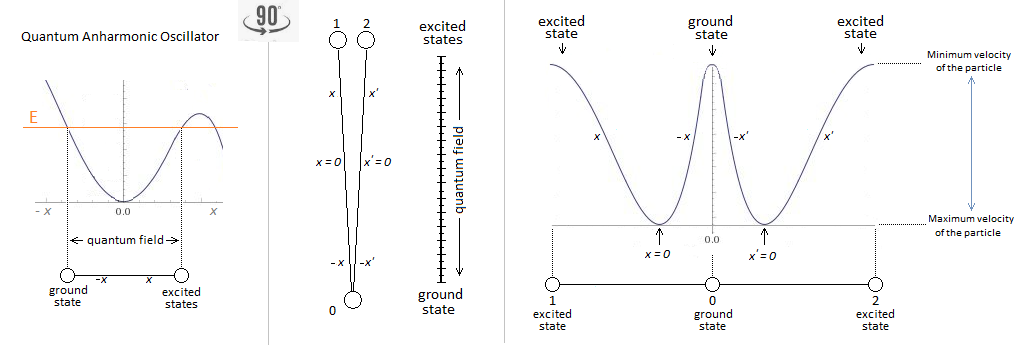



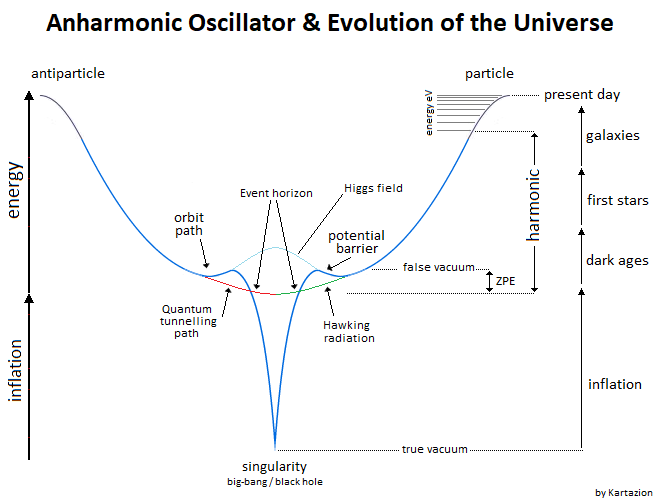
Kartazion Metric
in Speculations
Posted
Curvature occurs only by under the influence of mass or energy. Mass being that represented at rest in Figure 3 is then substituted by energy. The curvature is therefore produced by this energy distribution.
For example for inflation similarities are to be noted between the shape of the charge/discharge curve of an RC circuit through Vc.
